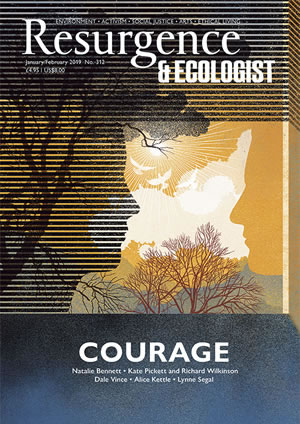The resurrection of a lost historical figure of importance is unfailingly a cause of fascination, and so it is with Francis Willughby, 17th-century gentleman-scholar and “the first true ornithologist”, as an absorbing new biography by Tim Birkhead unhesitatingly labels him.
A wealthy young landowner whose spirit was fired by the beginnings of the scientific revolution, Willughby was an early Fellow of the Royal Society, elected in 1663. He died in 1672 aged only 36, with his researches into natural history incomplete, and for three and a half centuries his reputation has been overshadowed by that of his Cambridge mentor and subsequently best friend, the naturalist John Ray. Indeed, 10 years ago Birkhead himself, Professor of Behavioural Ecology at the University of Sheffield, wrote a widely praised history of ornithology that took Ray as the starting point for the scientific study of birds.
Yet the professor, one of our most accomplished science writers, has had a change of heart and now believes that that distinction should be awarded to Willughby. It is a nice point, because Willughby and Ray were close collaborators in the boldly ambitious scheme they envisioned of putting the study of Nature on a wholly new and rational basis. And in fact when Ray came to publish the fruits of their joint research on birds four years after Willughby’s death, he entitled the book The Ornithology of Francis Willughby – a gesture of astonishing generosity that we may ascribe to a noble nature, or to the fact that Ray was being supported by Willughby’s widow, or, most probably, to both.
Birkhead certainly makes a good case for Willughby’s real importance and for the need to bring him out of obscurity. The young scholar found himself in a remarkable place at a remarkable time – the Cambridge of the mid-17th century, a centre of the intellectual ferment of the scientific revolution, or, as its participants termed it, the “new philosophy”. The emergence of modern science was a great historic shift away from the medieval habit of basing everything on authority, whether of the classical writers (Aristotle above all) or of the Fathers of the Church, towards a new exploration of the world based on experiment without any preconceptions. It is generally assumed to have begun in 1543 with Copernicus’ assertion that the Earth revolved around the sun, not the other way round, and may be said to have proceeded via Francis Bacon, Galileo and Descartes to an Earth-shaking climax with Isaac Newton, who set out the universal laws of motion and gravitation in his Principia Mathematica in 1687.
Thus the revolution is often seen in terms of major developments in mathematically based disciplines – maths itself, physics and astronomy – but it also sparked an enormous surge in the biological sciences and in the study of the human body as well as botany, zoology and the natural world, and it is here that Willughby, Newton’s predecessor at Cambridge’s Trinity College by nine years, was a true pioneer.
The scion of a landowning family born into affluence at Middleton Hall, Warwickshire, Willughby was the sort of young man who in the mid-17th century might normally have seen university as nothing more than a gentlemanly finishing school. He had no need of a profession. But Willughby was different: in modern terms, he was a swot, graduating top of his year and filled with enthusiasm for the “new philosophy”. That his interest began to focus on natural history was owing to Ray, his Trinity tutor, eight years his senior, who had a special interest in botany. (Ray wrote the first Flora of Cambridgeshire, from scratch.)
As the son of an Essex blacksmith, Ray came from a social background that was a world away from Willughby’s. Yet the two men gradually went from being tutor and pupil to developing a personal friendship inspired by a joint enthusiasm for the study of living things, which became a dynamic cooperation. They jointly conceived the idea of bringing order to the chaos that characterised natural history in the early modern period.
It was a project of astonishing ambition, one that we today, with our detailed field guides to hand for everything from wild flowers to dragonflies, may find hard to imagine; but in the 1660s there were no field guides to wildlife, there was no agreement about how species were related to each other, there were not even agreed names. What was that seabird some people called an elegug? Well, it was a guillemot. But an elegug was also a razorbill, and a puffin. And some people called a guillemot a skout. And some people called a puffin the bird we now call a Manx shearwater. Which was which?
It was on birds that Willughby and Ray first concentrated, and they saw that the essential first step in bringing order out of chaos was classification: how were the myriad species related? They began work on this in 1662, after Ray lost his Cambridge fellowship and Willughby, clearly an exceptionally nice man, undertook to support him financially; and they were still hard at it when Willughby died ten years later. Their key move was an extended research expedition, a European grand tour from 1663 to 1664 taking in Germany, Austria, Italy and Spain, during which they acquired copious numbers of birds, dead and alive, bird books and bird pictures.
Birkhead gives a wonderfully colourful account of their tour, and then of their subsequent labours to produce the first rational classification of bird species based on physical characteristics. In making it clear that Willughby’s contribution was at least as important as Ray’s, Birkhead not only puts to rights a historical misapprehension, but also gives us a most moving portrait of an unusual scientific friendship, at the very moment when science as we know it today was emerging from medieval darkness into the light.
Michael McCarthy, a former environment editor of the Independent, is the author of The Moth Snowstorm: Nature and Joy.







